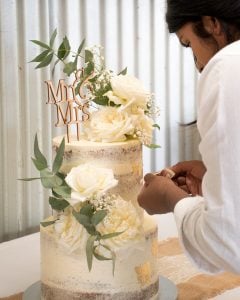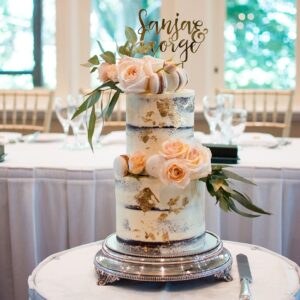Uncategorized
5 Things to Lookout for When Baking your Own Cake
Baking can be a daunting experience for some people and the availability of thousands of recipes online don’t really help when you’re a beginner and trying to pick one suitable for you.
Trust me! I have been in your shoes many many years ago as I began baking in my teen years. I have failed countless times by attempting to make whatever I come across on the internet. This is partly due to my lack of knowledge but let me help with that today! 🙂
1. Preparing Ingredients
One important thing I highly recommend to first time bakers is to place ALL of the ingredients normally kept in the fridge outside so it comes down to the room temperature. To put it simply, you want to have an easy time when you mix together ingredients such as butter so it doesn’t splatter everywhere.
I won’t go into too much baking terms but bringing the chilled ingredients to room temperature allows the batter to be smooth and also bakes much nicer. Follow this step if you want an easy road ahead!
2. Pre-heat the oven
The most important thing to keep in mind is that you should turn on the oven when you begin to prep the ingredients. So, roughly giving yourself about 20-30 minutes and in this time the oven will do its magic and come to the correct temperature by the time you are ready to put the cake to bake.
Why do you have to waste electricity?
Well, if you want a more evenly baked cake I do recommend this step and it will also reduce the baking time of your cake because the oven is already heated…
3. Correct Method
This is a tough one to comment on because there are numerous ways to make the same cake but of course the method will be a factor in the type of cake you have. So, what I will do it list down all of the different ways of baking.
-Mud cakes (melted ingredients are mixed with eggs and flour)
-Sponge cakes (wet ingredients are mixed with dry ingredients and then adding eggs)
-Butter cakes (creaming butter, sugar and eggs then following on with flour and milk)
-Chiffon cakes (sponge cake recipe but separate egg whites and whip this with caster sugar and fold it into the batter at the end)
Mud cakes are dense cakes, so the time given to beating eggs is less as you don’t want to incorporate much air into the batter. Sponge cakes and butter cake are very similar but have different mixing methods. Chiffon cakes are very airy and soft cakes so the separation of egg whites to be whipped and later folded into the batter is necessary to keep as much air as possible in the batter.
4. What is the right temperature?
Let me tell you a USEFUL tip to know when it comes to baking… ALL OVENS ARE DIFFERENT!
This is something many baking influencers mention but not exactly written on many recipes you can find on the internet. Yes, I got your back! 🙂
Usually majority of the recipes will say a temperature of 180C but I would recommend that you use roughly between 150C to 160C as a beginner until you begin to understand how your oven works. Keep in mind that you would rather give your cake longer time to bake evenly on a low temperature than putting a high temperature and burning the top but have an uncooked cake.
5. When is it Baked?
This is a step that most people either nail or go off the rails in because it can be a little confusing for those who aren’t obsessed with baking. Now, you might be thinking that don’t you just need to see if its golden on top? Well, let me tell you that there’s a chance your cake might not be cooked all the way through.
I have 2 methods of checking if my cake is baked and that is all you need to nail that next cake.
-Use the tip of your finger to slightly press the middle of the cake. If it springs back up, you cake is done.
-Next is to use a toothpick and poke to the bottom of the cake and if it comes out with couple of crumbs, the cake is done. If it has batter on it, obviously needs longer to bake.













